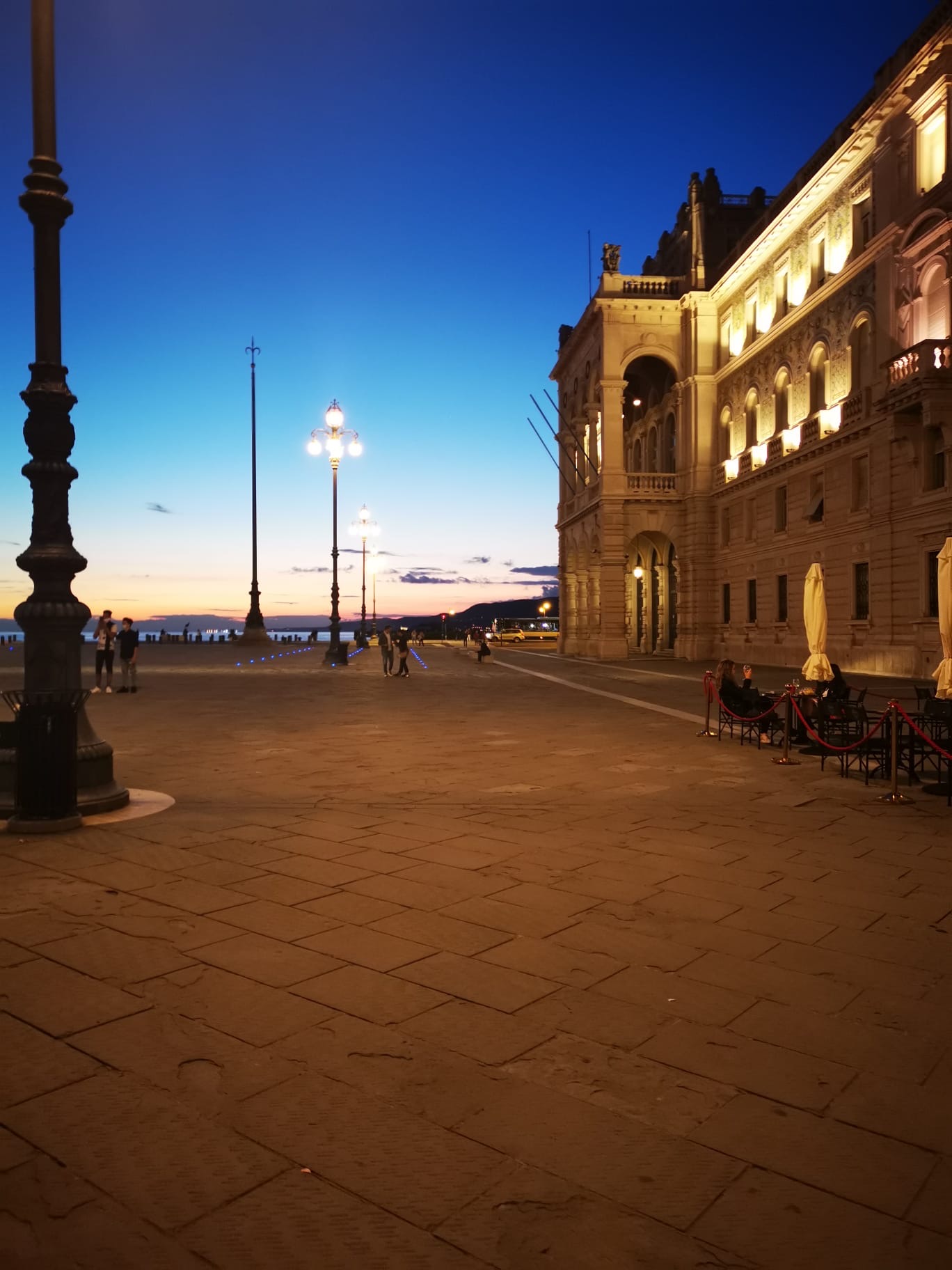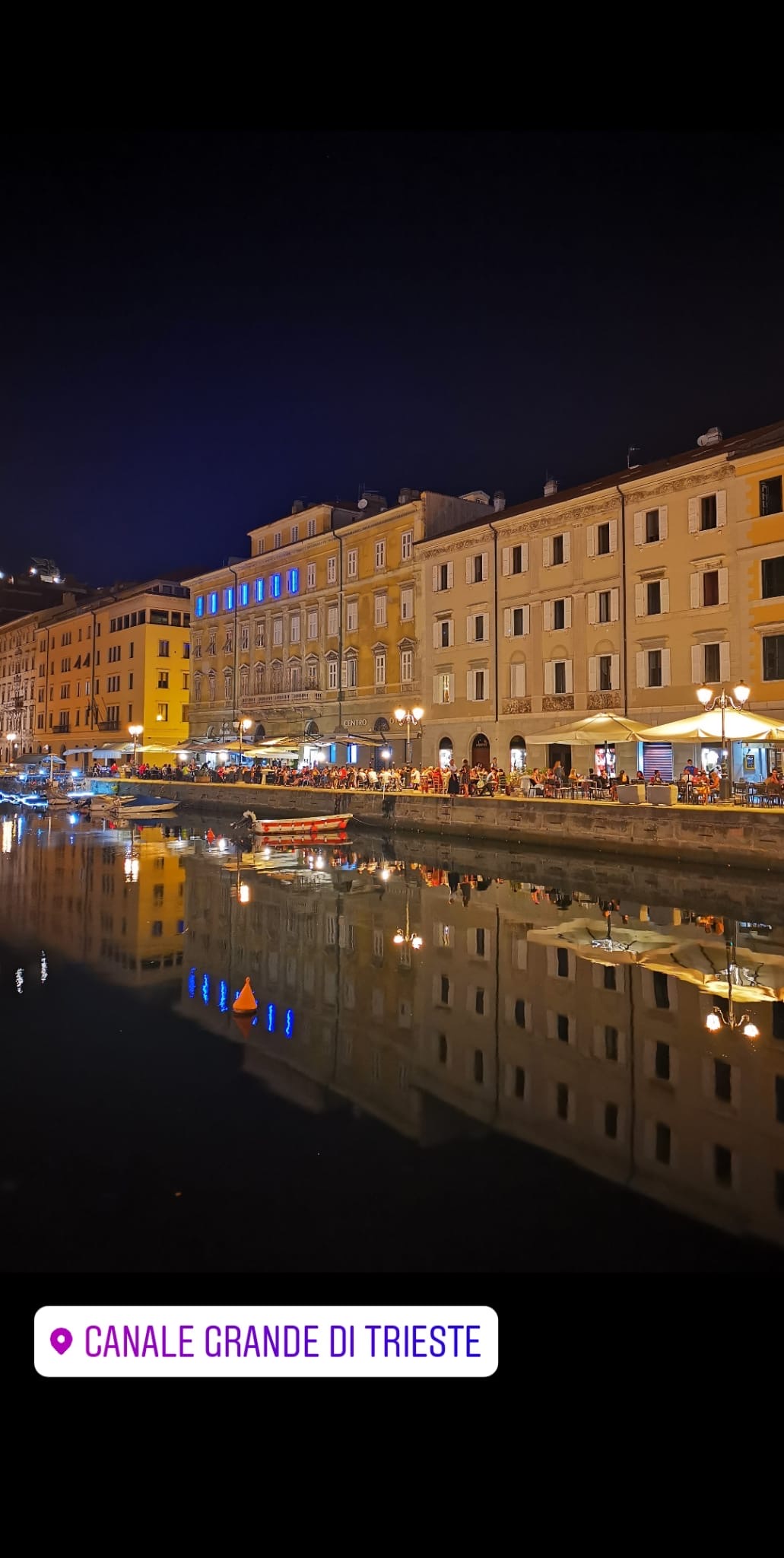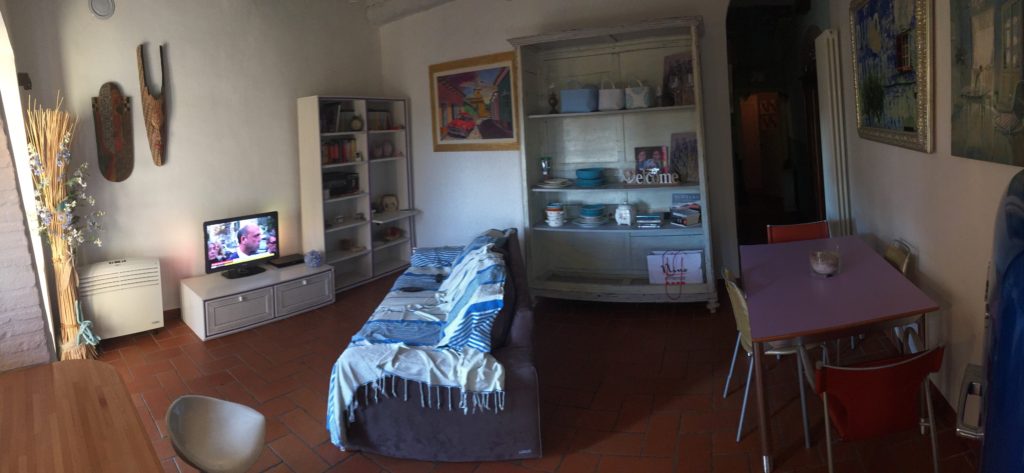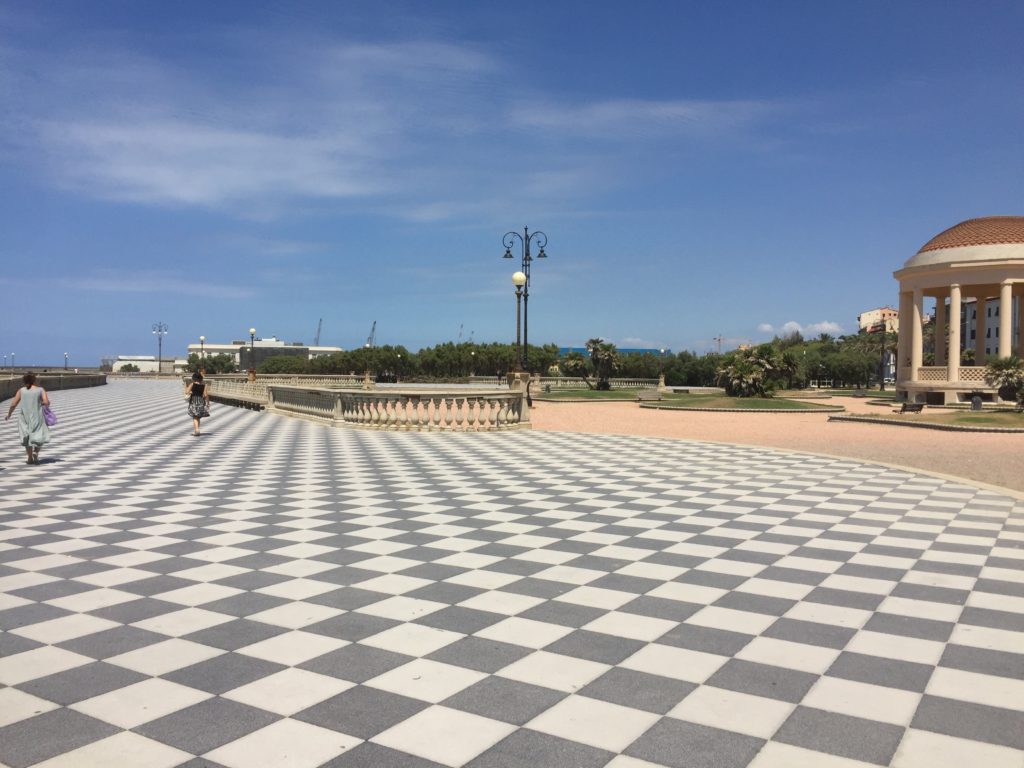Il Molise non esiste (Molise doesn’t exist). Molise, Italy’s second smallest region and youngest region became a meme a few years ago but now it seems things are changing for the region. The mere fact that almost everyone in Italy has heard this joke that Il Molise non esiste brings it attention- and hopefully a reason to visit to discover whether or not it is just an urban legend. Searching #ilmolisenonesiste, I came across some very interesting posts that I thought were shareworthy.

Fabio Lucarelli visited Civitacampomarano in Molise. His post tells us that soon people will be talking about it. 
La Cantina – a craftsmanship business in Molise posted this recently. Diodato is the Italian singer who won the Sanremo Music Festival and came to Molise. La Cantina gives a shout out to him for discovering Molise before the New York Times.

I have always known that Molise did exist since my grandmother was from Bojano, in the province of Campobasso. I began studying Italian in college and soon after, my cousin, Alessandro, and my Zia Maria came to visit. I was excited to meet them and Alessandro even came to stay for a while at my house, while my Zia Maria stayed with my grandparents. After their visit, I said I would one day come and visit them in Bojano. It was only a short time after, during my study abroad experience with NYU, that I was able to visit. Bojano was vastly different than Florence, where I was studying, but it was the place my family came from and I felt like it was the “real” Italy. My mother had come with me on this trip and it was her first time back in Italy after she had left when she was two years old. We were there for a short time but it was an experience we will always remember. After just a day or two, we felt as if we had been with these people our entire lives and we quickly felt at home. We visited Cività di Bojano and nearby Sepino with its Roman ruins. Many people don’t realize that the Roman Empire wasn’t just central Italy but extended beyond Rome and far beyond the Italian peninsula. Bojano, as a town, predates even the Romans. It was actually settled in the 7th century BC and its name is a derivative of the name Bovianum. A legend is told that some Samnite people were sent off to colonize and their ox had stopped here to drink and that is where these Samnites decided to settle. Bojano lays in the foothills of the Matese Mountains, where my cousins often go skiing and is along the Biferno river.

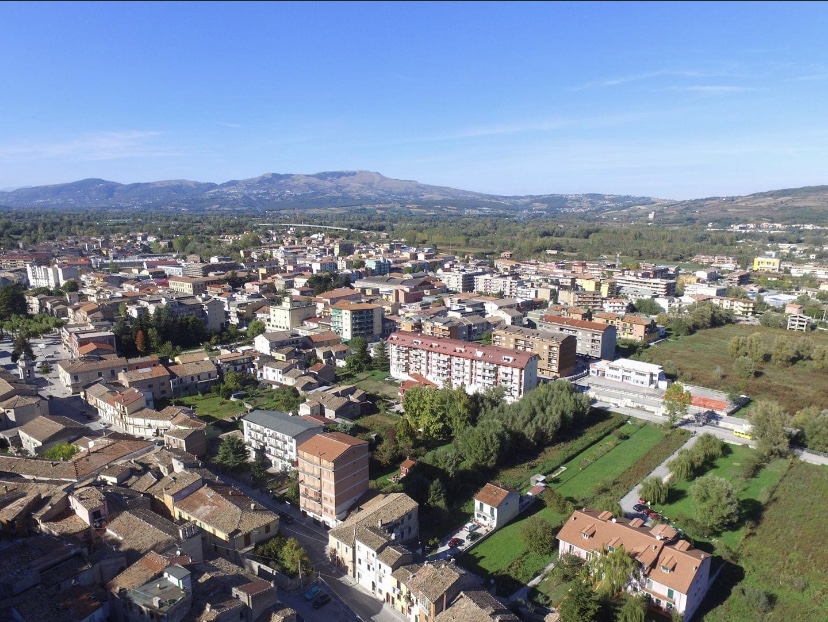

Civita Superiore (Bojano)
Needless to say, when I saw a posting on the NIAF Instagram page about a film called My Country which took place in Molise, I had to see this film. Luckily, I was able to stream it on Amazon Prime Video here. This is where I first learned about this joke Il Molise non esiste.
The movie is directed by Giancarlo Iannotta, who also stars in the film about an Italian-American who learns just before his father’s death that he has an Italian half-brother. Soon after Lucky (the protagonist) finds out, he does what most of us do when we want to find someone- we head to social media. Lucky finds his Italian brother and decides that he must go to Italy to meet him and to go to the town where his father was born and raised, Castel San Vincenzo, in Molise. When Lucky meets his brother and tells him, the reaction is exactly what the joke brings out in people. Francesco, Lucky’s brother, is floored that anyone would ever want to go to Molise, the region that doesn’t exist. Nonetheless, he does accompany Lucky to Molise and this is where we get to see how charming and untouched Italy can be. It is here where we understand friendliness can be instant and that a region that doesn’t exist is worth the detour off the beaten path. My Country has the potential to put Molise on the travel itineraries of Americans who have only thought of visiting Rome, Venice and Florence.

I was fortunate enough to be able to ask Giancarlo some questions about the film and about his connection to Italy and Molise. Giancarlo’s Italian heritage has been an important part of his life. His nonno, Felice Iannotta, emigrated to Chicago in 1956, in search of the American Dream. He, like many before him, worked tirelessly to create a better life, earn enough to bring the rest of his family over and give future generations opportunities they couldn’t have had in Italy. As members of the Chicago Molisani Club, Giancarlo and his family have enjoyed keeping their heritage and Molise in their hearts. Here is some of my interview:
What was the inspiration for the film? Had you previously traveled to Italy? The inspiration for My Country first started when I moved to Italy five-ish years ago. I had a wonderful “late in life” study abroad and was inspired to make my first feature based on my experiences living in Rome and going to Molise on the weekends. While in Rome, I worked part-time as a tour guide driving tourists around in that vintage Fiat 500 in the film and used that as the catalyst for the brothers to start their road trip. Traveling to Molise since I was 12, I always wanted to put my father’s hometown Castel San Vincenzo. My first memories of being in Italy were in 2001 when I was 12 years old and was completely in awe. From the incredible historical sites of Rome to walking around my father’s hometown, it was my dream to document those experiences and the ones that followed in some way… but never imagined I would make a feature film there!
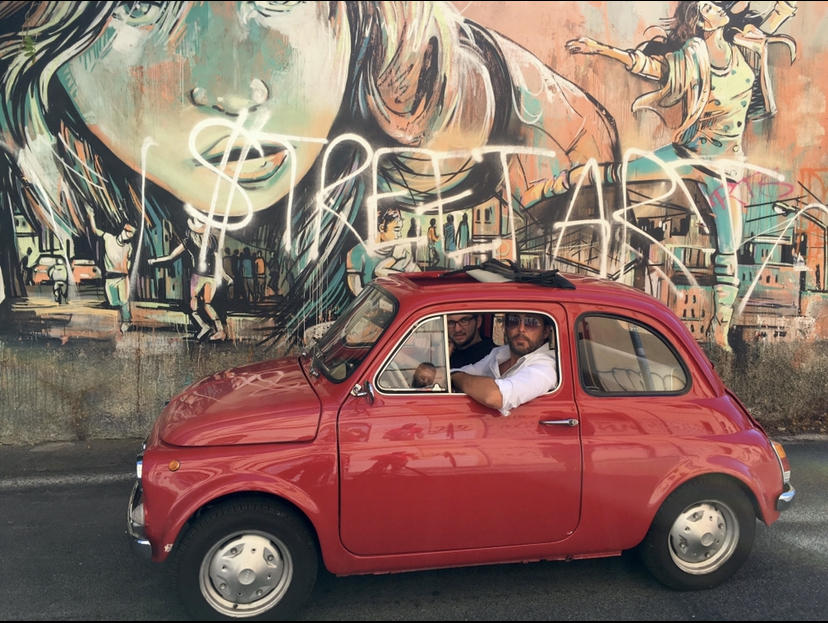
Vintage Fiat 500 driven by Francesco and Lucky 
Giancarlo’s family in Castel San Vincenzo
How did you cast your film? I wrote the first draft of the screenplay in Rome and then came back to the States for a couple of months to start raising production funds. With my producers, we started assembling our crew and then put out a casting notice on the Italian version of Craigslist. Our actress Rosella came directly from a video submission and then Antonio, my brother in the film, I saw in a short film directed by a good friend who was also my assistant on the movie. I used a lot of my aunts, uncles and cousins in supporting parts and extras.
What were the best experiences filming and what were some difficulties? Any interesting anecdotes? As it says in the My Country poster “embrace the bumps and detours…” and we surely did! Whether it was losing a location, our boom microphone breaking or a flat tire on the Fiat 500, making a low budget independent film is an uphill battle but ultimately came with many more enlightening moments. First, getting to direct in Italian was something I never thought I’d do in my wildest dreams. Watching great actors every day saying my lines brought the script to life in more ways than I could’ve thought possible. My favorite memory, although chaotic in the moment, was seeing my cousins, great aunt and great uncle improvising during the gnocchi scene (my favorite of the entire film). They had never been on camera and with just a little explanation of the scene before shooting, they were so impressive and truly naturals!

Are there any plans for a sequel? Will Lucky and his brother have any other stories to tell? I think the ending of the movie definitely sets up the Francesco and Anna characters to potentially come to the States. Chissà! Who knows! It’s pretty ambitious to make your first feature film in a foreign country so maybe a more local story would be ideal.
For more information on the film, visit mycountryfilm.com

My Country is well worth streaming. I recommend it to Americans and Italians. It’s time for everyone to think outside the box and visit some of Italy’s hidden (until now) treasures. Molise does exist and if you are looking for some more information on what you can do in Molise, I recommend you visit My Italian Diaries. Valentina has a passion for her country and has written two posts that highlight Molise. The first gives you six great reasons to visit Molise and the second, brings you to Civitacampomarano, where a local festival of street art is so beautifully done that it’s on my list of places to visit!
If you’d like to delve a bit more into the national joke, Il Molise non esiste, check out this blog post by Alex Sakalis. He goes into the beginnings and how Molise has turned this around to bring tourists into their region. He also highlights towns to visit through his own experience traveling to the least known region of Italy. After reading this, you’ll be intrigued enough to include Molise on your next Italian vacation.






